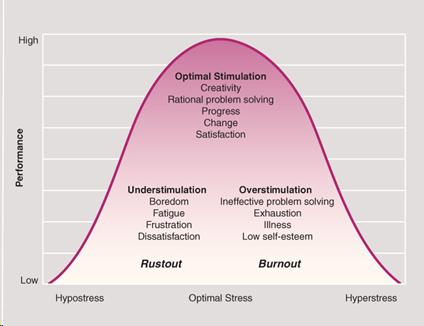
Understanding Stress (3)

So as I just talked about when introducing the concept of stress, I mentioned that some stress is needed for optimal performance, and this is theorized by the Yerkes-Dodson Law, as you can see in the illustration on the right. In this figure on the illustration on the right, the X-axis represents levels of stress, with too little stress on the left, too much stress on the right and optimal levels of stress right in the middle, and the Y-axis indicates performance or health ranging from low to high. So when you have very little stimulation or stress in your life, also called hypostress, that can lead to feelings of boredom, fatigue; you might lack motivation to participate in new challenges or new opportunities. But alternatively, when you have too much stimulation or too much stress, that can also lead to poor health or performance, so you see both ends of the spectrum there along the X-axis. On the far left and the far right you have low performance or low health and both of those conditions. But to achieve high performance or good health, you need to have an optimal level of stress that results in creativity, your motivation to make changes, and many other positive outcomes.